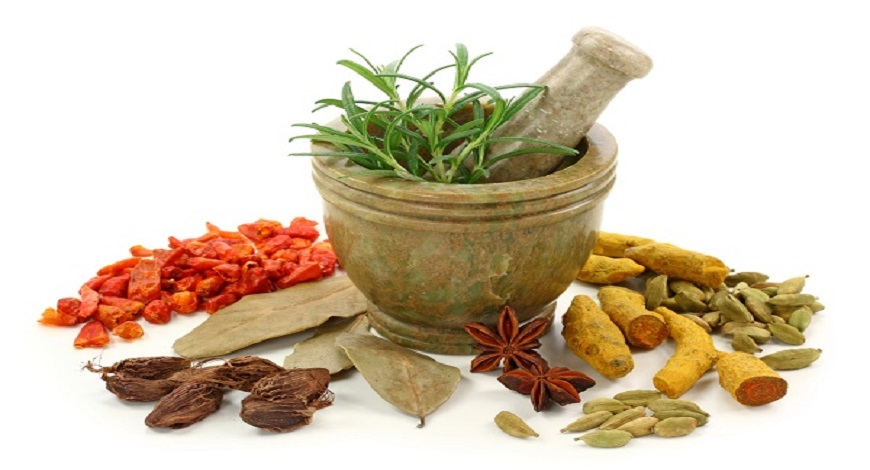
Introduction
Dravyaguna is an integral part of Ayurvedic system of medicine. The study of Dravyaguna is based on Dravya, guna, rasa, vipaka, virya, prabhava and karma, which are described as the energetics of Ayurvedic drug formulation. According to Ayurvedic theory, all the constituents of the universe have medicinal utility. In Ayurveda, as far as origin of drugs is concerned, they are derived from the medicinal plants, minerals, animals, marine source or poison.
Materia Medica proper is defined as knowledge of natural history, physical properties characteristics, and chemical characteristics of drugs. It includes study of herbs, minerals and drugs from the animal kingdom. The Ayurvedic equivalent for Materia Medica proper is Dravyaguna, which is the study of medicinal herbs in Ayurvedic terms. Now days the term Materia Medica proper is better known as Pharmacognosy.
Dravya – Lakshana
Charka Samhita sees dravya as an organized moiety. Ayurvedic system prefers to use drug as a whole instead of isolating active bioactive constitutes; again a point based on the organized nature of the dravya. When the active constituent is isolated, dravya no longer remains organized and chances of having side effects are increased.
Dravya can be defined as store house of guna and karma parameters. For example, atoms combine to form molecules and similarly molecule can be dissociated into basic atoms. The combinations and separations can be compared with karma. These changes occur at the molecular level within the substance and cannot be seen with the naked eye.
According to the Ayurvedic concept, guna parameter also resides in the dravya as when two things combine together to form a new thing and only extensive study it can be said that the new thing has extra property.
Classification of dravya
1. According to origin
A. Audbhida: It includes dravya derived from plant origin. Majority of the natural products come from green flora. In fact all the systems of medicine are largely dependent on medicinal herbs for obtaining drugs. Until the discovery of antibiotics and analgesic plant based medicines were the primary healthcare system. Today we see the re-emergence of plant based medicine. According to W.H.O sixty to seventy percent of drug used in synthetic system of medicine are derived from herbal source. With development of botany, biochemistry and ethnophramacology, the study of medicinal plants has become more scientific.
Due to the non-availability of scientific devilments, the scholars of Ayurveda did a tremendous job in classifying the audbhida dravya into four distinct classes.
a. Vanaspati: It includes herbs, shrub and trees.
b. Vanspatya: It includes plants in which fruit appears after flowering.
c. Aushadi: The dravyas which gets destroyed after maturation. d. Virudha: This group includes climbers and twiners.
B. Jangama: This group includes man, animals, birds and insects. Drugs obtained from animal source are included in this group. They are further divided in to four classes:
a. Jarayuga: It includes animals from mammalia.
b. Andaja: It includes birds and fishes.
c. Swedaja: This group includes insects.
d. Udbhija: It includes animals from ambhibia.
2. According to usage
A. Ahara: It includes routine diet consumed by human beings for maintaining optimal health. Rasa is predominating factor in Ahara dravyas.
B. Aushada: It includes drugs taken in various forms for alleviating diseases.
3. According to specific action
A. Dosha prashamana: In Ayurveda, imbalance among three biological humours vata, pitta and kapha is considered to be the root cause of all the diseases. Texts have described various approaches to pacify the disturbed humours.
B. Dhatu pradushaka: Some drugs aggravate the biological humours and disturb the function of body tissues. Ayurveda has mentioned diet incompatibilities and contraindications for drugs. For example, a drug aggravates pitta humour in a person or produces pathology in blood tissue; this is referred to dhatu pardushana.
C. Swasthahita: Some drugs help in maintaining good health of human body and mind.
4. According to elemental composition
According to Ayurveda, all the dravayas are made of five elements. According to the predominance of the five elements, dravya has been classified as akashiya, vayavya, agnya, apya or parthiva.
5. According to therapeutics
Drugs are used for pacifying disturbed biological humours (sanshamana dravya). Sometimes drugs are used for removing humours from the body (samshodhana dravya). In modern science drugs are classified according to therapeutic use. As an instance, a drug used for lowering high blood pressure is known as antihypertensive agent.
6. According to pharmacological action
Charaka has classified drugs according to pharmacological action. For example a drug which is used in the treatment of jvara (fever) is known as jvaraghana (febrifuge).
Enumeration
In Ayurveda, drugs have been classified in number of ways but the classification based on action of the drug is widely accepted. For instance a drug used for alleviating worm infection is known as anthelmintic and in Ayurvedic language, krimighana.
